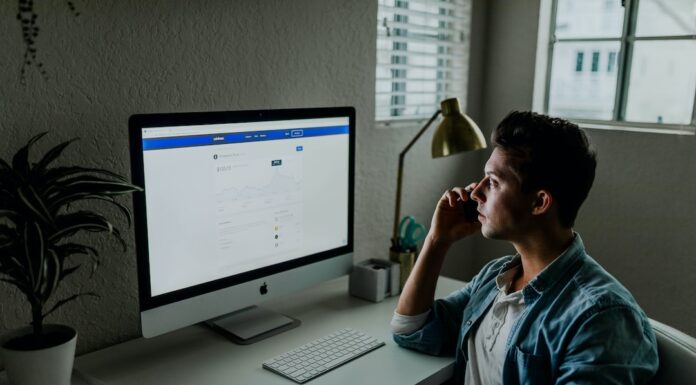With the rising prevalence of remote workers, effective time management has become more important than ever. When working from home, it can be all too easy to get distracted, procrastinate, and lose focus throughout the day. Without the structure of an office environment or set work hours, many remote employees struggle to stay productive.
Fortunately, there are techniques and strategies remote workers can use to maximize their time and avoid wasting hours due to disorganization and distractions. In this guide, we’ll cover some tips for improving time management as a remote employee. From creating set routines to limiting multitasking, implementing these suggestions can help remote workers complete more necessary tasks, achieve goals faster, and become more effective and productive overall. With strong time management, remote employees can successfully balance their work and personal lives while excelling at their jobs.
Read on to learn key ways to boost productivity and make the most of your time while working remotely. With focus, planning, and organization, you can optimize your hours and build positive habits even without coworkers watching over your shoulder. Our time management tips will set you up for success as a remote employee.
Set Up a Dedicated Workspace
Having a dedicated workspace is essential for remote workers to stay productive and minimize distractions. When working from home, it can be tempting to work from the couch or bed, but this often leads to distractions and makes it difficult to maintain a professional mindset.
Set up a desk or table in a quiet area of your home, away from the television, kids, or other family members. Make sure you have a comfortable chair and ample lighting. Close the door if possible to reduce noise. Decorate your workspace in a way that inspires productivity, like adding plants, artwork, or vision boards.
Only use your workspace for work. Don’t eat, watch TV, or browse the internet from your desk. This trains your brain that when you’re sitting there, it’s time to be productive.
Ensure you have all the equipment you need in your workspace, like a laptop, second monitor, mouse, headphones, and any specific tools for your type of work. Having the proper setup will allow you to complete tasks efficiently. Minimize clutter on your desk to avoid visual distractions.
By having a dedicated workspace optimized for productivity, remote workers can mimic an office environment at home and minimize distractions, creating an ideal setting to maximize time and focus. For more insights into creating an ergonomic home office, consider referencing resources from Ergonomic Trends.
Create a Daily Routine
Establishing a consistent daily routine is crucial for remote workers to maximize productivity. Having set wake-up, start and end times creates structure and a reliable framework for getting work done.
Aim to wake up, have breakfast, and start work around the same time each day. This signals to your body and mind when it’s time to be productive. Avoid sleeping in or working odd hours as it can disrupt your natural circadian rhythms.
Create workday rituals that help you transition into focus mode. This may include morning exercise, listening to energizing music, tidying your workspace, or meditation. Rituals give your brain time to wake up and shift gears before diving into demanding cognitive tasks.
Similarly, build an evening routine that helps you unwind from work. This sends the mental signal that the workday has ended. Shutdown rituals can involve shutting off work devices, transitioning locations, changing clothes, enjoying family time, or reading.
Having consistent rhythms minimizes decision fatigue throughout the day. You conserve mental energy for doing the work rather than deciding when to start. A steady routine also leads to better sleep, health, and happiness.
Use a Calendar
A calendar is an essential time management tool for remote workers. By blocking time for focused work, scheduling breaks, and marking personal appointments, a calendar helps you stay organized and focused.
Block time for focused work – On your calendar, block out chunks of time for working on big projects or deep-focused work. Having set blocks of uninterrupted time will allow you to concentrate without distractions. Turn off notifications during these blocks.
Schedule breaks – It’s important to take regular breaks when working remotely. On your calendar, schedule 15-30 minute breaks every 2-3 hours. Breaks help recharge your mental energy and boost productivity. Use breaks to stretch, snack, chat with someone, or take a quick walk.
Mark personal appointments – Your calendar should include both work and personal commitments. Mark things like exercise class, doctor’s appointments, family obligations, etc. This provides a full picture of your day and ensures personal events don’t conflict with work time. Keeping work and personal time separate is key for remote work.
By proactively planning your day in a calendar, you can create structure and discipline when working from home. The calendar acts like a daily to-do list so you know exactly how to spend your time. Check your calendar each morning so you’re prepared and focused for the day ahead. For further guidance on effective calendar management, refer to the Todoist Blog.
Set Goals and Priorities
Setting clear goals and priorities is essential for effective time management as a remote worker. The SMART goal framework is useful for creating actionable objectives:
- Specific – Well-defined, clear goals.
- Measurable – Include quantifiable metrics to track progress.
- Achievable – Goals within your control that you can accomplish.
- Relevant – Goals align with overall objectives and priorities.
- Time-bound – Goals have deadlines.
With SMART goals set, rank tasks and projects by importance and urgency. The Eisenhower Matrix is a simple tool to categorize tasks:
- Important + Urgent – High-priority tasks to complete immediately.
- Important + Not Urgent – Schedule time for these important tasks.
- Not Important + Urgent – Delegate or eliminate these tasks if possible.
- Not Important + Not Urgent – Low-priority tasks to do later.
Focus your time on high-priority important tasks. Schedule time blocks in your calendar to work on them without distractions. This will maximize productivity as you tackle the most essential goals and tasks. For more insights on effective goal setting, consider referencing resources from MindTools.
Manage Distractions
Working from home comes with its fair share of distractions. Colleagues messaging you, kids coming into your home office, and the temptation to sneak in some online shopping during work hours. While occasional distractions are understandable, you’ll be far more productive over the long run if you actively manage the distractions you face daily.
One of the top tips for minimizing distractions is to turn off any non-essential notifications during work hours. Mute messaging apps, email alerts, phone sounds, and anything else on your devices that can pull your attention away unexpectedly. Only allow notifications for true emergencies and urgent communications to come through.
The internet and social media are other major sources of distraction for remote employees. It’s too easy to open a new browser tab and quickly check your favorite sites when you should be working. Consider using website and app blocking tools that will limit your access to the most distracting sites during set work hours. Freedom, StayFocusd, and Forest are examples of apps that can block time-wasting sites and reinforce better internet habits. This removes the temptation altogether and helps you stay focused.
Take Breaks
Taking regular breaks is essential for maintaining energy and focus when working remotely. Studies show that taking short, frequent breaks helps boost productivity and reduces fatigue. Here are some effective tips for taking breaks as a remote employee:
- Follow the 20/20/20 rule for screen breaks. This involves taking a 20-second break every 20 minutes and looking at something 20 feet away. This protects your eyes from constant screen time and prevents digital eye strain. Set a timer to remind yourself.
- Take your lunch break away from your desk. Eating lunch at your workspace makes it harder to mentally detach. Even a short walk outside or eating in a different room helps provide separation between work and rest.
- Do light stretches or meditate. Simple desk stretches and breathing exercises during microbreaks help reduce muscle tension and mental fatigue. This stimulating break gets your blood flowing.
- Hydrate and snack. Use break times to drink water and eat healthy snacks. Dehydration and low energy make concentration difficult. Stay nourished.
- Disconnect completely. Avoid checking emails or doing work tasks during breaks. Give your mind a chance to fully disengage and reset.
Taking regular breaks while working remotely improves productivity while reducing burnout. Follow the 20/20/20 rule, take lunch away from your desk, and disengage completely during breaks. You will return to your tasks feeling refreshed and refocused.
Communicate Availability
Setting clear expectations around your availability and communication can help maximize productivity when working remotely.
- Set expectations with colleagues about your typical response time to messages. For example, let coworkers know you tend to respond to chat messages within a few hours, but may take longer when heads-down on projects.
- Indicate when you need uninterrupted focus time and will minimize communications. Block time on your calendar and set your chat status to “busy” or “do not disturb” modes. Having 1-2 hours a day without meetings or messages can allow for deep focus.
- When possible, communicate your typical working hours, especially if these differ from traditional in-office times. Knowing when remote team members are generally online helps ensure collaboration stays smooth.
- If stepping away for an extended period during the day, provide colleagues a heads up on when you’ll be back. This avoids ambiguity around your availability.
- Periodically check in with your manager and team on communication protocols to see if any adjustments could optimize productivity. As situations evolve, remain open to revisiting norms around availability.
Conveying your availability sets realistic expectations and empowers deep focus. With some planning, remote workers can achieve responsiveness while still protecting time for heads-down work.
Avoid Multitasking
Multitasking may seem like you’re getting more done, but it reduces productivity and increases mistakes. When you switch between tasks, there’s a lag time to reorient yourself each time. This context-switching can use up a lot of mental energy.
Instead, focus on one task at a time. Give your full attention to the current project until a breakpoint, then move on. This flow state is much more efficient. Batching similar tasks together can also help minimize task switching.
For example, check emails just a few times a day rather than constantly. Set blocks of time for focused work. When you need to shift gears, take a short break first to clear your mind before moving on. Single-tasking requires discipline but helps you accomplish more in less time. For further understanding of the impact of multitasking on productivity, explore resources from the American Psychological Association.
Reflect and Improve
Taking time every week to reflect on your productivity can help identify areas for improvement. Here are some tips:
- Review how you spent your time each day. Make note of what worked well and what didn’t. Look for time-wasters that can be eliminated.
- Analyze your goals and priorities. Did you spend time on the right tasks? Were you focused on high-priority work?
- Consider when you were most productive. Take note of conditions, like time of day, location, or other factors, that helped you focus. Try to replicate these.
- Assess your progress on goals. Are you on track? If not, what’s holding you back? Identify roadblocks to tackle.
- Think about your daily routine and schedule. Do you need to adjust when you start and end work? Do you need longer blocks of time for deep work?
- Review your focus and energy levels throughout the day. When did you struggle to concentrate? Adjust your schedule to optimize for peak productivity times.
- Identify distractions you faced. How can you reduce these? For example, turn off notifications, close email, silence your phone, etc.
- Consider if you multitasked excessively. Make a conscious effort to be more present on one task at a time.
- Discuss challenges with colleagues, mentors, or coaches. Getting an outside perspective can provide helpful solutions.
- Implement at least one or two productivity changes each week based on your analysis. Continual incremental improvements lead to major gains over time. For further insights into self-reflection and productivity improvement, consider referencing resources from Lifehack.











